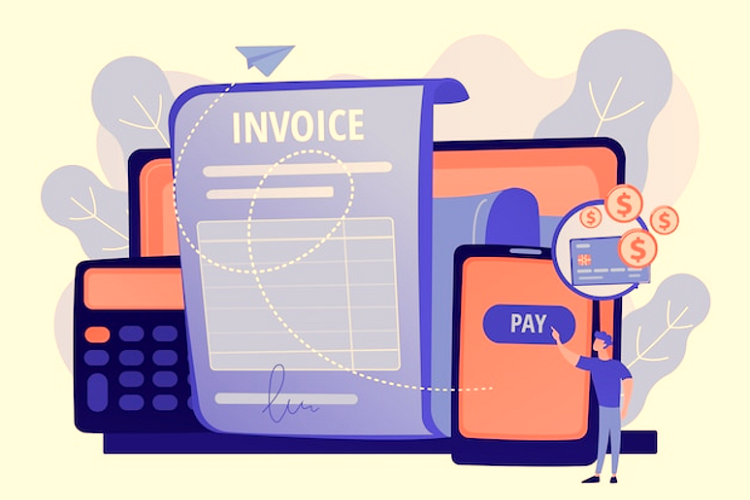Accounts receivable (AR) management encompasses much more than receiving payment on a bill and is essential for increasing cash flow and preventing bad debts.
A robust and effective AR management procedure can distinguish between diminishing capital and a thriving business. However, companies that continue to operate their AR manually will encounter numerous hurdles that negatively affect their financial position and client satisfaction.
This article will discuss accounts receivable management, why it’s essential, and how your firm may profit from good AR management.
What is Accounts Receivable?
Accounts receivable (AR) is money owed to your firm for services or products that have already been supplied. The money is usually listed as an asset on your balance sheet because it adds value to your business.
If you’ve been in business for quite some time, you will know of customers who make late payments or none. When a customer fails to pay and you cannot collect, that’s bad debt.
To avoid overstating their accounts receivable on their accounting records, long-established firms will frequently approximate their cumulative bad debts in advance. They will accomplish this by forming an allowance for uncollectible accounts.
Suppose your anticipated annual sales sum is $150,000, and you have discovered that, on average, you will not collect 5 percent of your accounts receivable.
You may multiply your net sales by 5 percent to get an idea of how much bad debt you’ll have for the year. In this example, you will credit $7,500 to uncollectible accounts.
When it becomes evident that an account receivable will not be paid, it will need to be written off as a bad debt expense.
Suppose, for instance, after several months of patiently waiting, emailing him, and reaching out through his relatives, it is evident that Gary has vanished and won’t be paying the $600 invoice you sent him. You will deduct $600 from the allowance for uncollectible accounts to reduce it by $600.
It’s worth noting that the allowance for uncollectible accounts is merely an estimation of the sum you will not receive from your clients. After it has become apparent that a particular client will not pay, there is no longer any doubt regarding who will not pay.
What is the Significance of Accounts Receivable Management?
An effective AR management strategy ensures that the money owed is paid on time, diligently, and reliably. Keeping AR under control will help reduce the time and effort your team has to devote to collecting past-due accounts.
AR management includes many processes like extending credit, dealing with customers, billing, tracking and analyzing payment patterns, and reconciling received payments.
Given its scope, effective AR management has a wide range of effects on a company. The most glaring case is the reduction of bad debt. No company will want to be weighed down by many unpaid invoices or late payments.
You can be certain that you’ll have enough cash flow to meet your company’s operational expenses if you receive regular and dependable client payments.
An efficient AR program will also promote positive customer experiences and a strong brand image for your company. Negative customer experiences may make it more difficult for your business to retain customers and negotiate favorable terms in the future.
An effective process will also assist your employees in maintaining concentration on crucial, high-value work that contributes to the growth of the business.
Lastly, your AR program’s effectiveness may affect your relationships with investors and your capacity to expand. Investors and lenders will want to evaluate whether your company has an efficient AR process and a good payment collection history.
Obstacles of Accounts Receivable Management
Keeping an effective AR management procedure is sometimes burdensome, particularly for companies still using manual processes. Some of the obstacles that companies may encounter include:
- Untimely billing: If you don’t have automated invoicing options, you risk payment delays, which can significantly influence your cash flow.
- Untimely collection: If your mechanism for monitoring transactions, invoices, and payments is not updated on time, you may be unable to collect payments from your clients.
- Invoice errors: Paper-based invoicing frequently results in human error. Because a bigger percentage of late payments are due to inaccurate invoicing, these errors could cost you more than you realize.
- A high number of invoices: More clients usually equate to more business success. That’s not true, though, if you’re having trouble submitting invoices and receiving payments on time. If your team lacks the tools to swiftly and successfully manage multiple clients and their invoices, they are likely to blunder.
How to Enhance Accounts Receivable Management
Considering its significance, investing in strategies that increase AR efficiency will benefit your company. Here are some of the ways you can achieve this:
Customer Credit Approval
The measures you adopt to extend credit to your clients are among the crucial components of efficient AR management.
If you have a thorough and well-thought-out process for approving accounts receivable, you can be sure that you are only giving credit to dependable clients who will make on-time payments. That will help reduce the risk, which might affect your company.
You can create a set of guidelines outlining your clients’ credit conditions. It might cover clauses defining credit limit, payment terms, interest rates, what encompasses a default, and how the guidelines will be implemented.
Additionally, you can establish a rigorous process for determining who qualifies for the credit. You want to design your policies to allow for flexibility and options so that you can reach a wider audience while also aiming to reduce your risk profile.
Any credit you give should be based reasonably on the risk involved, the price of the item, and the client’s capacity to pay.
Customer Master Data
The standard of client data you gather and how you manage it might impact how you handle your accounts receivable. Customer information might become troublesome in many ways.
When multiple departments in your organization input information about the same client using distinct platforms or protocols, or without harmonization, you will have redundant, difficult-to-use data.
When the information is needed to process pending payments, this might have a significant impact on your accounts receivable.
A Master Data Management system will enable your company to build a golden record, a unified reservoir for all the information in your company within all divisions, preventing these types of obstructions.
You need to have defined guidelines on the type of data you will be collecting. Furthermore, establish procedures for routinely checking the accuracy of your data to weed out inaccurate or contradictory information.
Educating your personnel on data practices ensures that everybody is aware of and adhering to the guidelines.
Invoicing & Billing
Invoicing might also help you in managing accounts receivable. Maintain detailed records on the work, goods, or services you’ll be billing if you want your invoices to be correct. You’ll also need to be explicit about the payment terms to prevent misunderstanding.
To help the client remember and prevent disagreements, include all the agreed-upon terms in your invoice. Be sure to abide by these terms as they will help demonstrate your dependability to clients.
Determine how often you want to send invoices to your clients and send them on schedule. You’ll need to send them as soon as possible to prevent delays. Ensure your invoices are legible, clear, and presentable.
Focusing on these issues will result in more consistent invoicing, ensuring that the accounts receivable process runs seamlessly.
Streamline Your Cash Application Procedure
Cash application entails applying incoming payments to the relevant client accounts and collectible payments as part of the AR process. Your accounts receivables will move more quickly and with less variance if your cash application procedure is well-run.
Cash application presents a wide range of issues in today’s digital environment. Since its inception, it has been carried out manually, with checks being the most common method.
There are various ways to pay, including credit cards, electronic debit, ACH, wire transfers, and regular checks.
Expanding client alternatives presents an additional problem for cash application professionals, as it’s crucial to gather transaction data from many sources.
However, companies can use technological advancements to speed up their cash application procedure. Automation may help shorten the time it takes for accountants to analyze paperwork by pairing payment to invoice and inserting the data into your general ledger.
It can also help minimize errors and improve efficiency in your application procedure. The scalability of the computerized cash application will allow you to support a variety of payment options while supporting your company’s growth.
Final Thoughts
Effective AR management procedures are essential to the operation of any firm. Without automation, however, it can be tough to maintain track of all the bills and client information involved in AR.
With accounts receivable management, it’s pretty easy to determine the profits and predict future revenue.
Consider implementing AR management if you want to avoid cash flow issues. Firms that continue to use antiquated, manual systems will undoubtedly be unable to compete in the future. We hope the article has answered all your questions on accounts receivable management.




